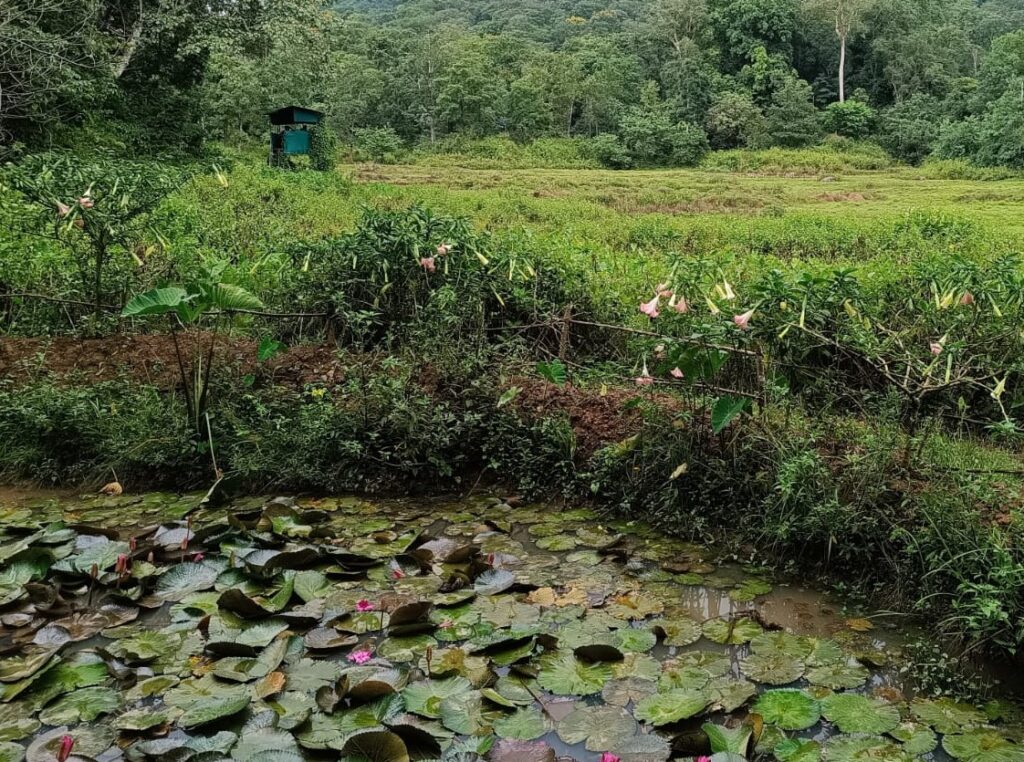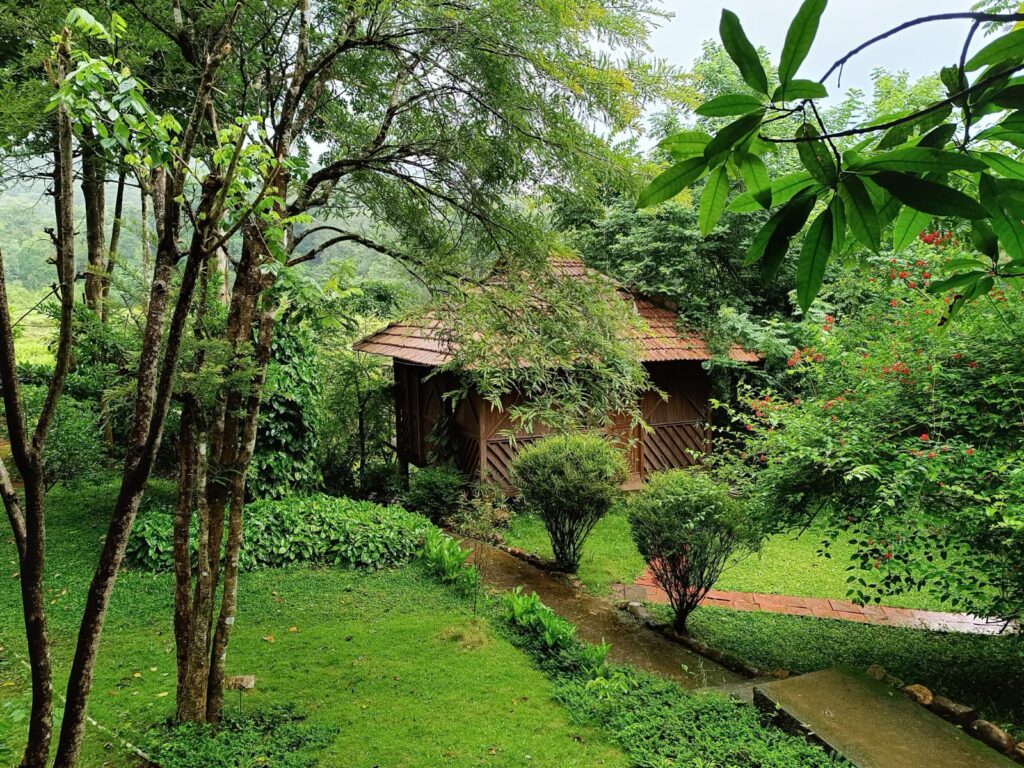
Meera Bhardwaj @ Wayanad
Endemic to Western Ghats, the population of Malabar Gliding Frog has been declining in India. This unique and rare frog species is found only in the Western Ghats which is one of the World’s Eight Hottest Biodiversity Hotspots.
This Amphibian, a rare frog species is found very active during the monsoon season which is in fact, its breeding season. Possessing the ability to expand the skin webbing between its toes, it enables this species a controlled descent when leaping from trees, therefore, it has earned the name gliding frog.

On a cool, rainy night, we found this Amphibian – Rhacophorus malabaricus hopping from a nearby lily pond onto a tree branch. A rhacophorid tree frog species which is four inches long, is found only in the Western Ghats. And it has been recorded at an altitude of 142 feet to 6200 feet above sea level.
And then to our surprise, this mossy frog species started gliding on to the roof top of our stay in the remote Jungle Retreat in Thirunelli, Wayanad district, Kerala. We were on a visit to Wayanad district when monsoons had just started in this part of India.

In this pond, we saw a lot of action from this mossy frog species. From the lily pond, it hopped on to a chair and then the thatched roof of our cottage and started leaping from one wall end to another and then glided seamlessly across the wall without any effort. They have an ability to leap from 9-12 metres.
The Malabar Gliding Frog inhabits the primary and secondary forests of the Western Ghats and of course, they must have undergone adaptations and so, easily enters from water bodies to human spaces.

We were all thrilled to see this mesmerizing gliding action of one of the largest mossy frogs at such close quarters. According to many observations, this species has adapted to human modified environments in their natural evergreen forest habitat.
And they are often found on tree leaves near water bodies and since a lily pond was near our cottage, this mossy frog glided inside and like a reptile, it was sighted moving from one wall to another. Although we could not see any nesting activity, naturalists say this species has been observed building foam nests on lands that they cover with leaf litter.

In fact, the continuous sound made by the vibrant green frog immediately caught our attention so that we came out of our rooms. The rapid series of clicks and trills – “trr tik tik trr” sounds made by them is usually to attract mates and this sound is amplified by its vocal sacs which is clearly visible.
And these calls are made during June-October which is the monsoon season. Even on the surface of the wall, it easily glides from one wall to the other wall using its extensively webbed ( skin webbing) toes. And this gliding action seems as if it is safely landing through a parachute without any chance of falling.

Amidst pouring rains, we started wandering in the dark night – once again to catch a glimpse of this beautiful Malabar Gliding Frog and its gliding action but now on trees.
Now how to describe such an active species with its vibrant green body? Its webbed feet look magenta or sometimes, orangish-yellowish in colour and is clearly visible from a distance. The skin webbing on its toes gives it the unique ability to glide from tree to tree.

Then the next day, we were fortunate to see the Malabar Gliding Frog as we sat down for dinner with rains pouring in and this beautiful Amphibian gliding from one tree branch to another. This was amidst the deafening sound of the cicadas.
For almost an hour, we were glued to the Malabar Gliding Frog and could see clearly see its granulated skin even during the spooky hours of the night. They are very good climbers and can easily move fast from twig to twig and branch to branch.

We could sight a pair of the gliding frogs – one was stuck for a long time near a hole in a shrub tree. These two amphibians moved so fast from tree to tree that it took us some time to sight them in the dark night.
Due to habitat loss, climate change, and presence of toxic chemicals in the environment, their population is decreasing in the Western Ghats. However, they are still listed as “Least Concern” in the IUCN Red List.

Very useful in the Western Ghats ecosystem, the very presence of Malabar Gliding Frogs indicates healthy, moist forest conditions. This striking gliding frog – well-known for its unique gliding behavior and foam-nesting habits displays a fascinating natural phenomenon.
Being an indicator species, it makes them an indicator of the health and integrity of the Western Ghats’ delicate rainforest ecosystem. This species is found in the Western Ghats bound states of Kerala, Karnataka, Goa, Tamil Nadu, and Maharashtra. So, the Malabar Gliding Frog are typically found near water bodies like ponds, streams and rivers.
(PHOTO CREDIT: ALL PHOTOS BY MEERA BHARDWAJ & MAYA JAIDEEP)
